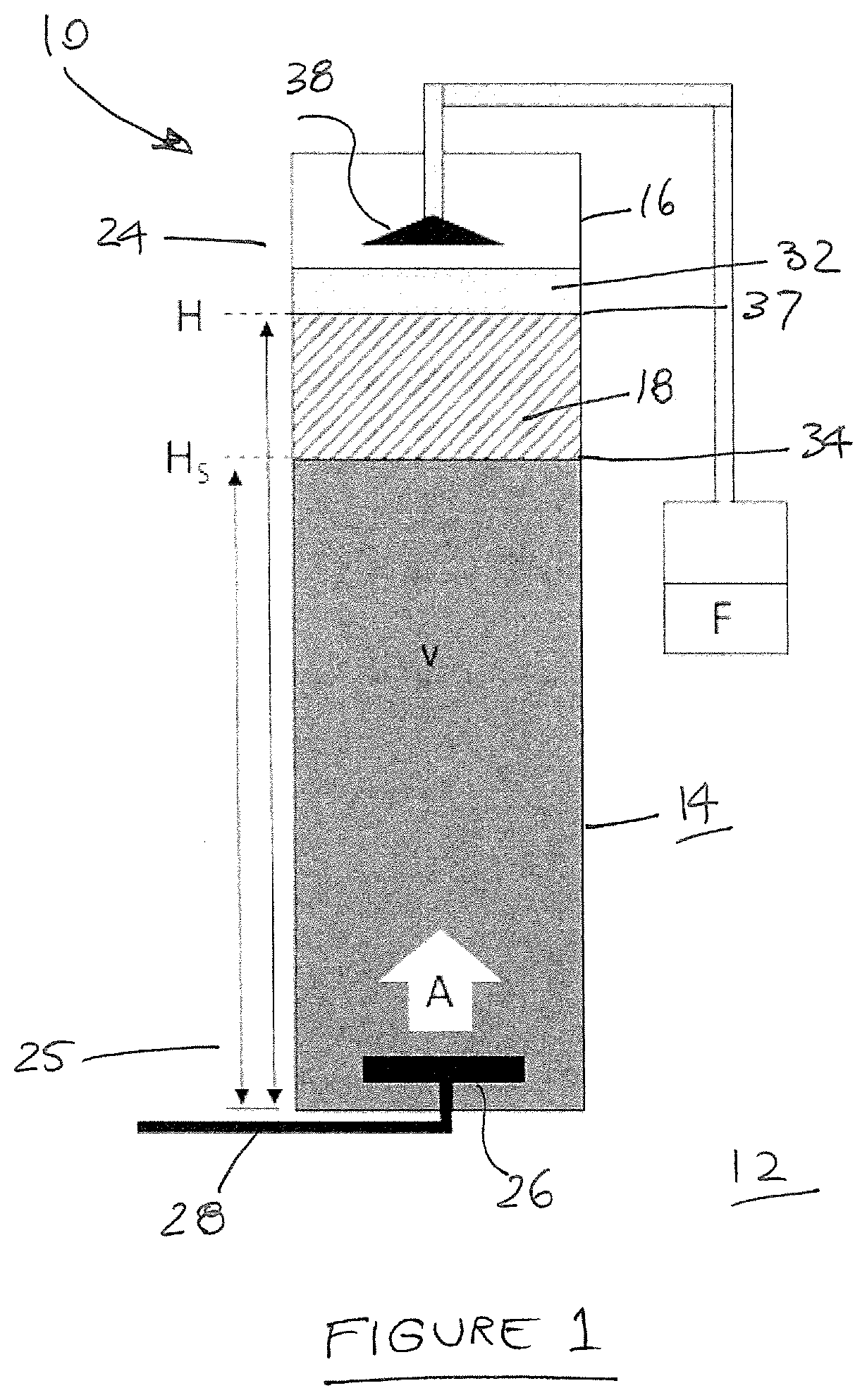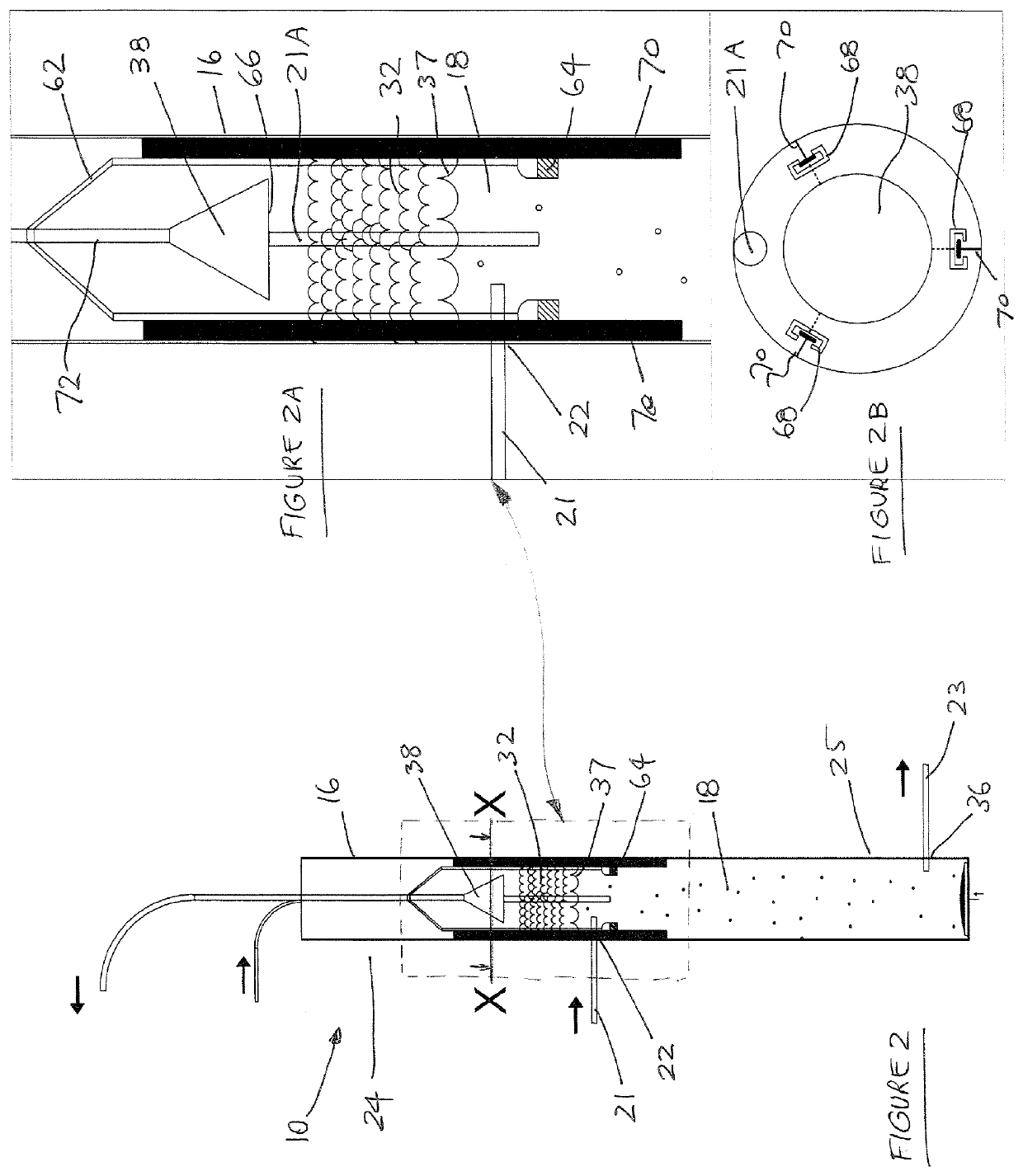Method And Apparatus For Separation Of A Substance From Water
a technology for separating a substance and a water source, applied in the direction of water/sewage multi-stage treatment, water/sewage treatment by oxidation, water/sewage treatment by multi-stage treatment, etc., can solve the problems of contaminated soils, groundwater and drinking water supplies, and pfas contamination, and achieve the effect of treating groundwater with pfas contamination and not working techniques
- Summary
- Abstract
- Description
- Claims
- Application Information
AI Technical Summary
Benefits of technology
Problems solved by technology
Method used
Image
Examples
Embodiment Construction
[0122]This disclosure relates to the features of a flotation cell 10 and its use for removal of an organic contaminant from a water supply which is pumped into that cell 10. Typically, such contaminated water has been obtained by extraction pumping from a nearby aquifer or water storage which has a certain level of organic contaminant(s) which have become dissolved or dispersed therein. A small amount of suspended solids may also be present, so that the water may have some turbidity.
[0123]Referring to the embodiment shown in FIG. 1, the flotation cell 10 is in the form of an elongate, cylindrical column 16 having an interior chamber 18. The column 16 is circular in cross-section, and is positioned to stand vertically upright on surrounding ground 12. The column 16 can be a tube or a plurality of casing elements 14 which is made of hard plastic or metal, to be sufficient to withstand the hydraulic pressure of the depths of water it is to contain, and not collapse or corrode.
[0124]The...
PUM
| Property | Measurement | Unit |
|---|---|---|
| concentration | aaaaa | aaaaa |
| concentration | aaaaa | aaaaa |
| concentration | aaaaa | aaaaa |
Abstract
Description
Claims
Application Information
 Login to View More
Login to View More - R&D
- Intellectual Property
- Life Sciences
- Materials
- Tech Scout
- Unparalleled Data Quality
- Higher Quality Content
- 60% Fewer Hallucinations
Browse by: Latest US Patents, China's latest patents, Technical Efficacy Thesaurus, Application Domain, Technology Topic, Popular Technical Reports.
© 2025 PatSnap. All rights reserved.Legal|Privacy policy|Modern Slavery Act Transparency Statement|Sitemap|About US| Contact US: help@patsnap.com



